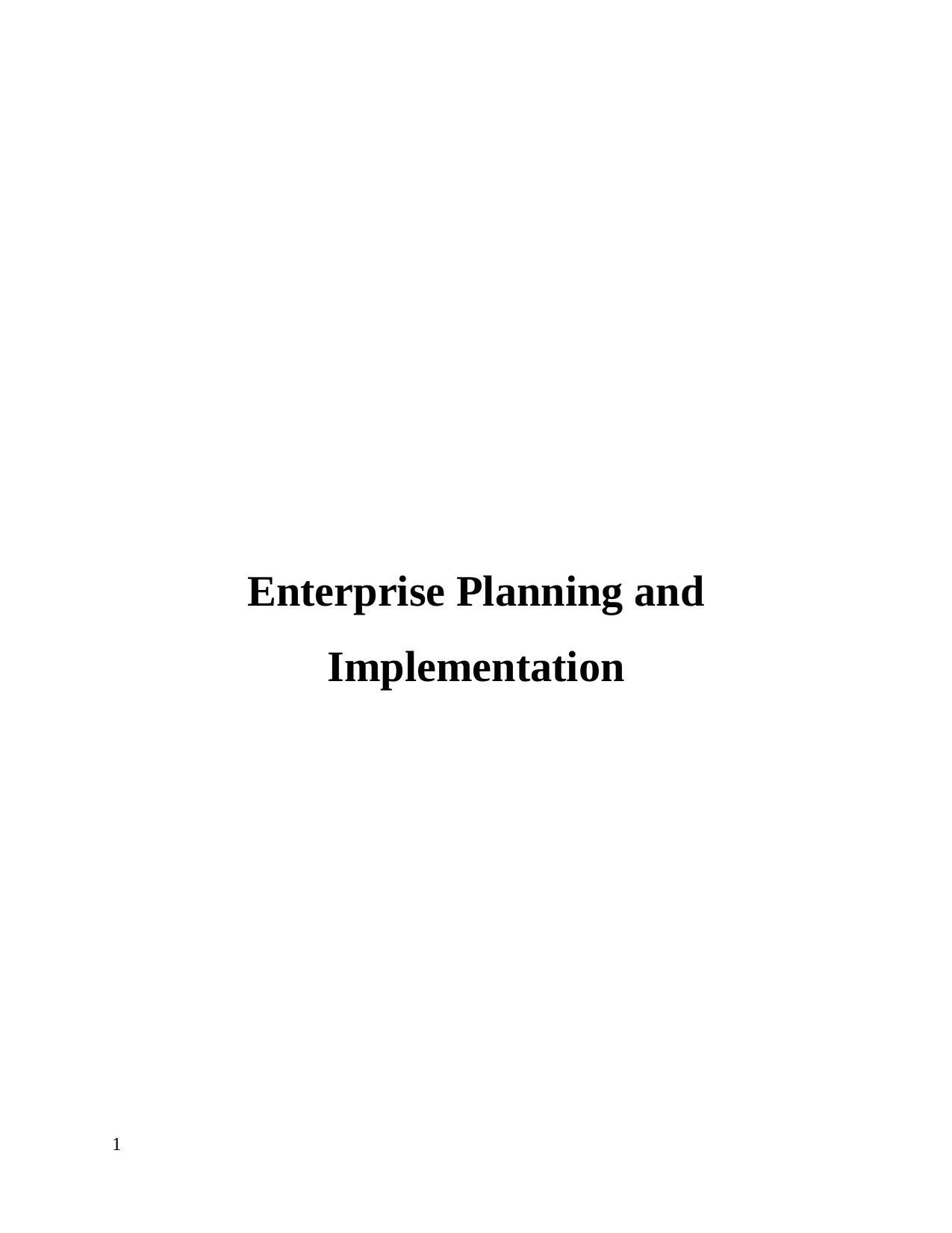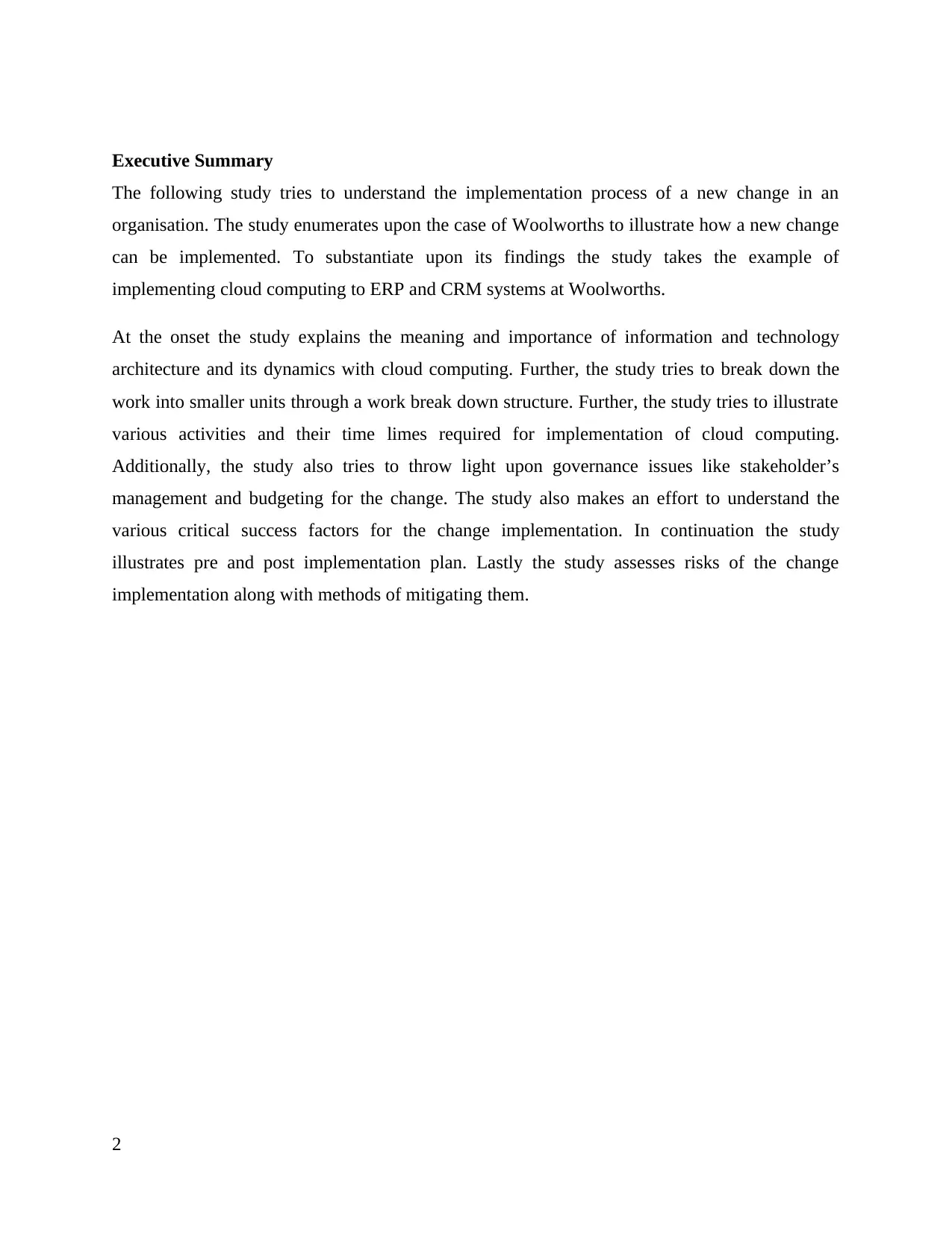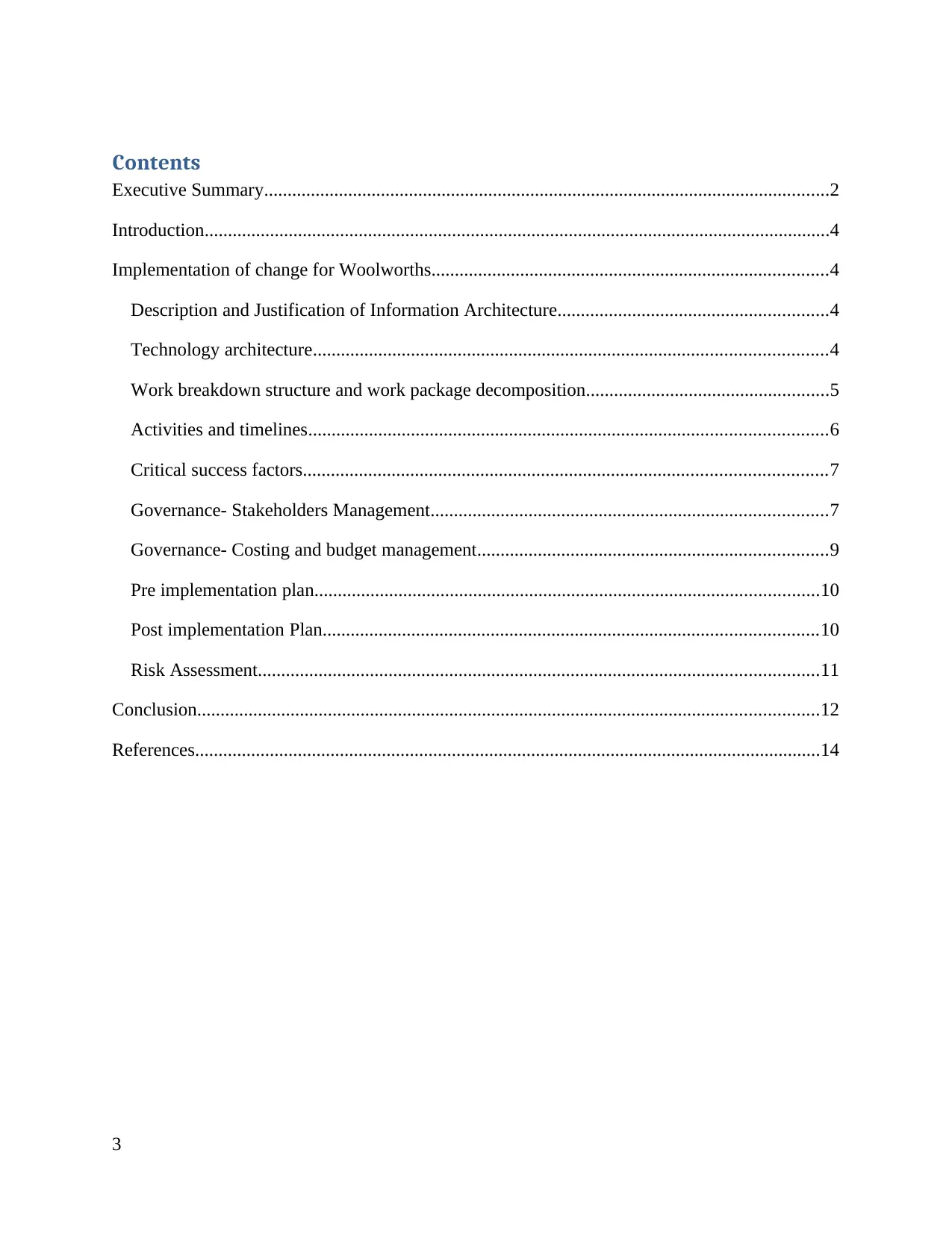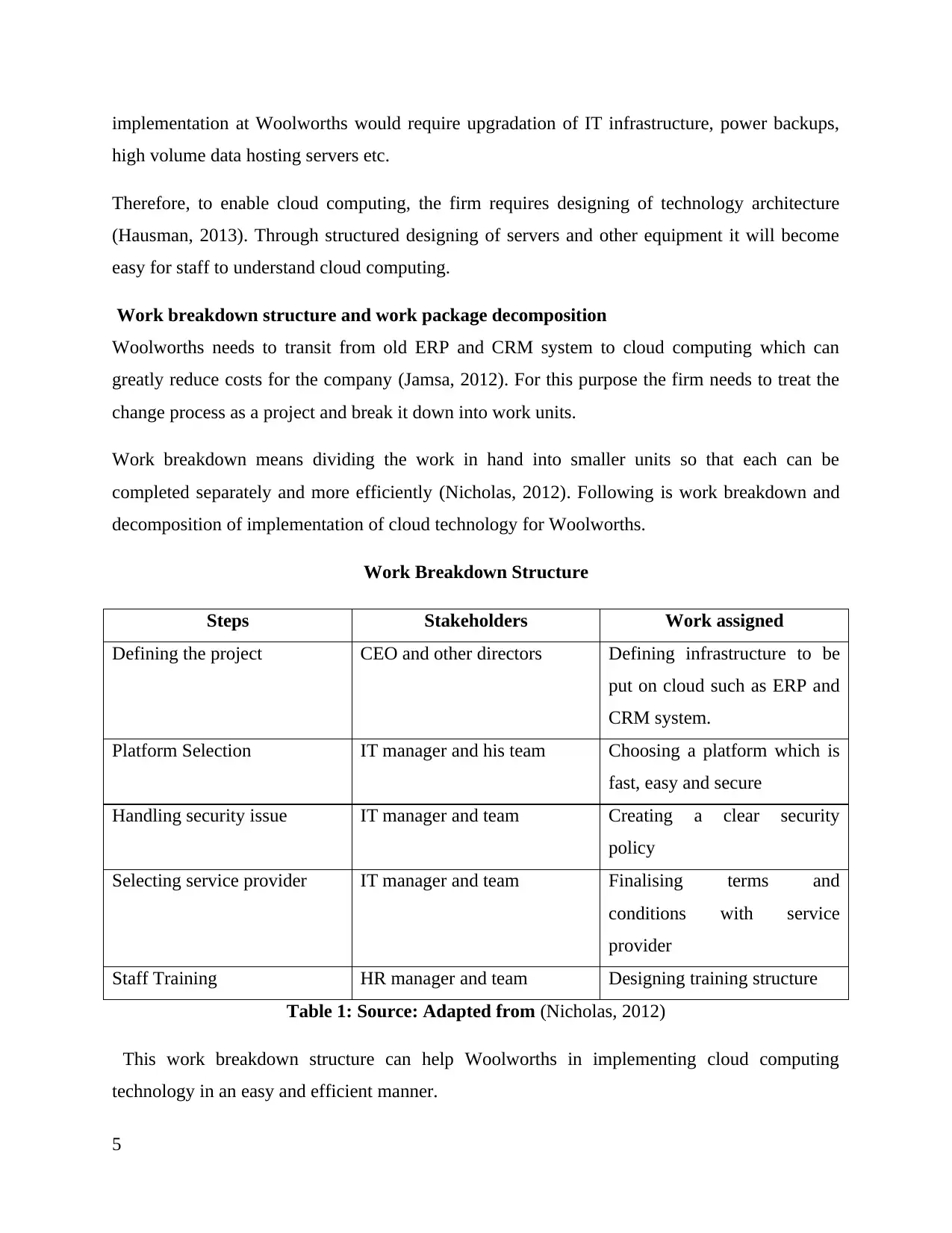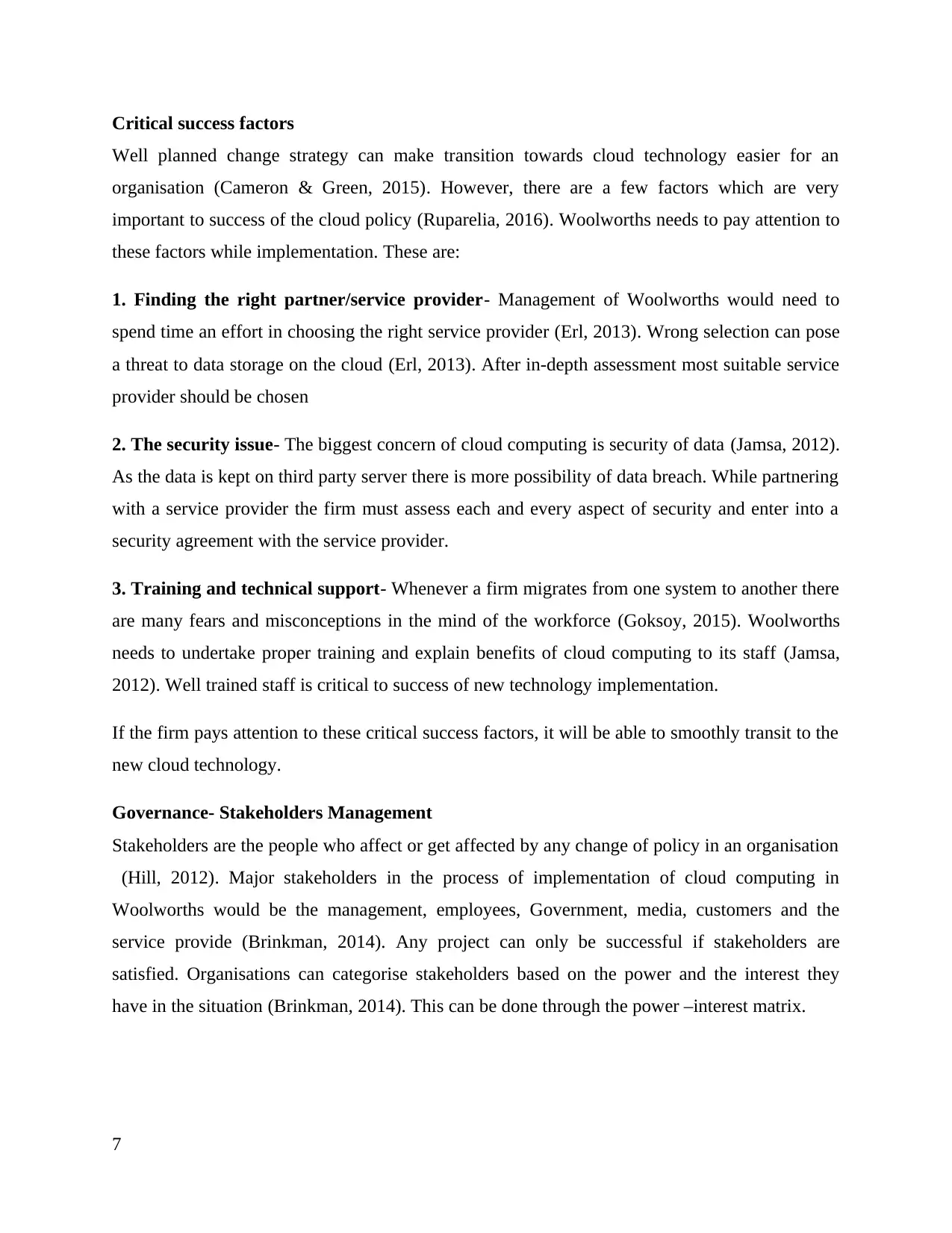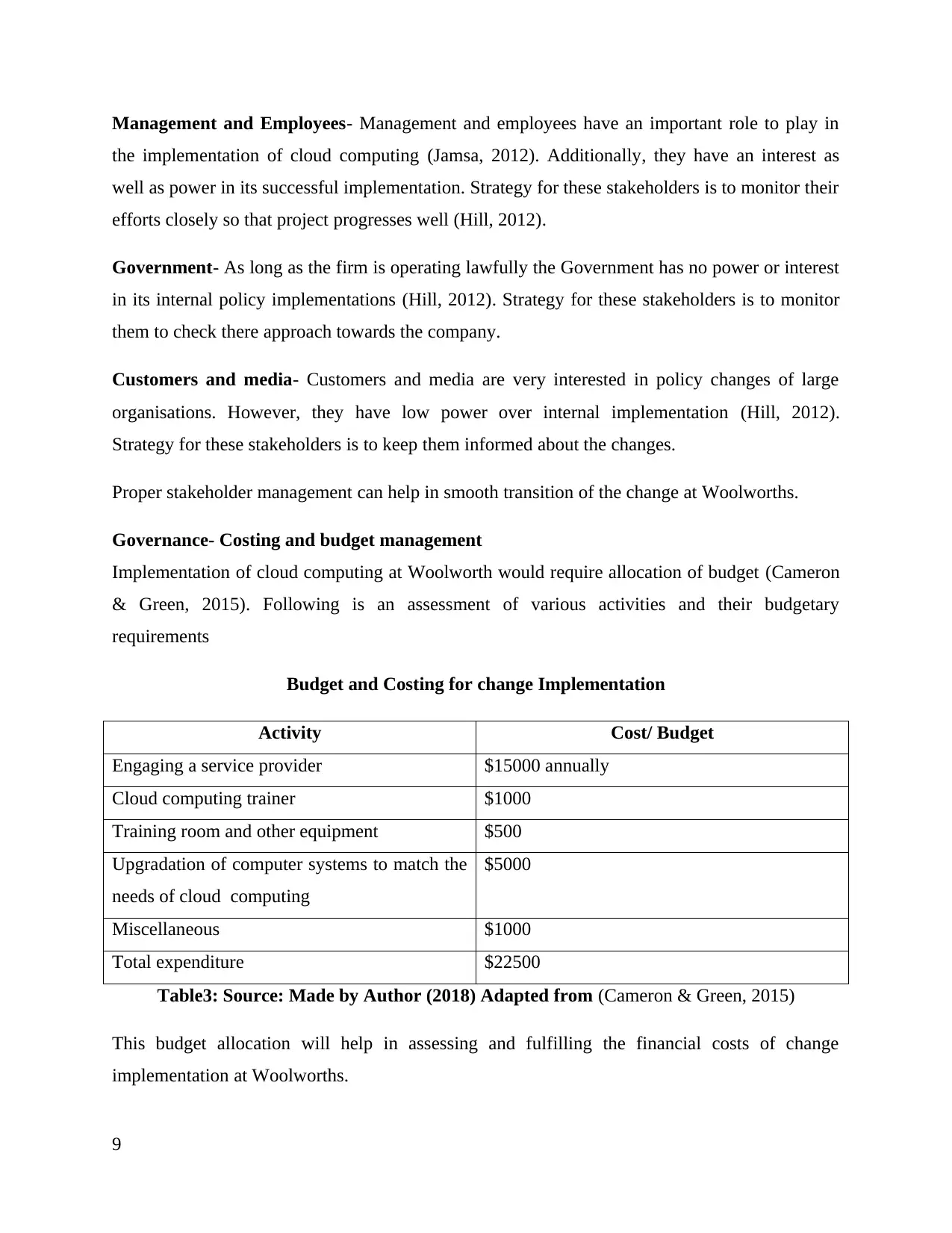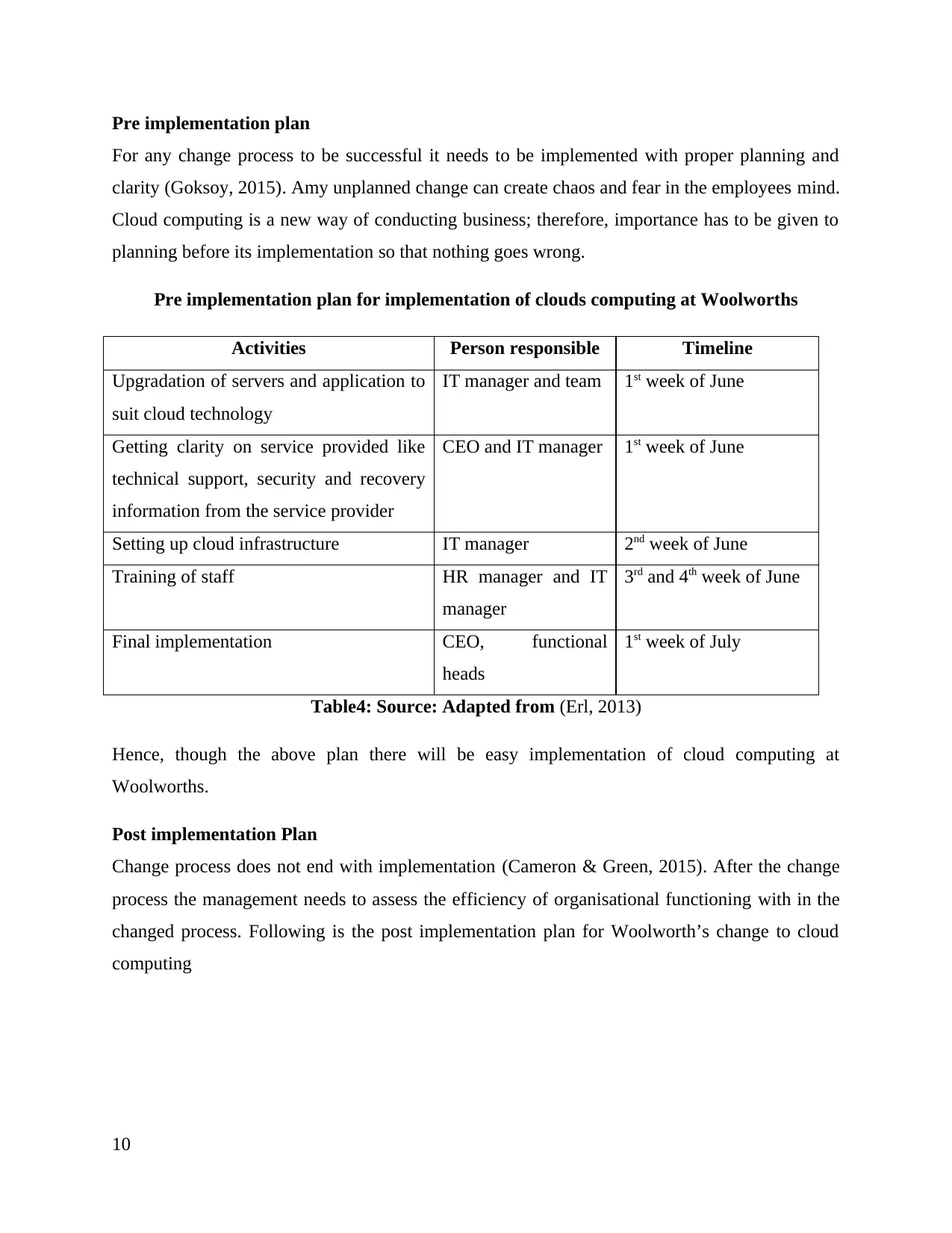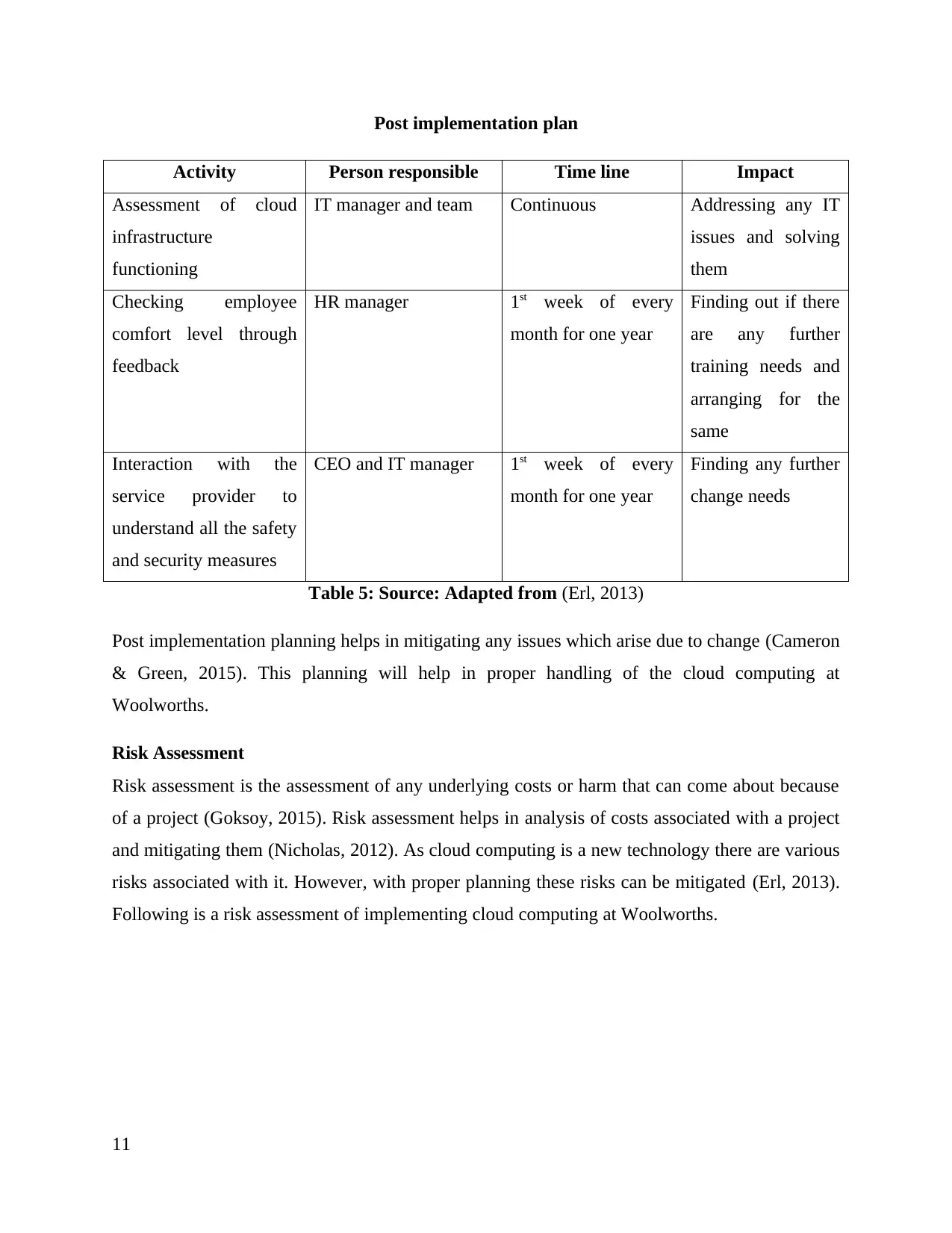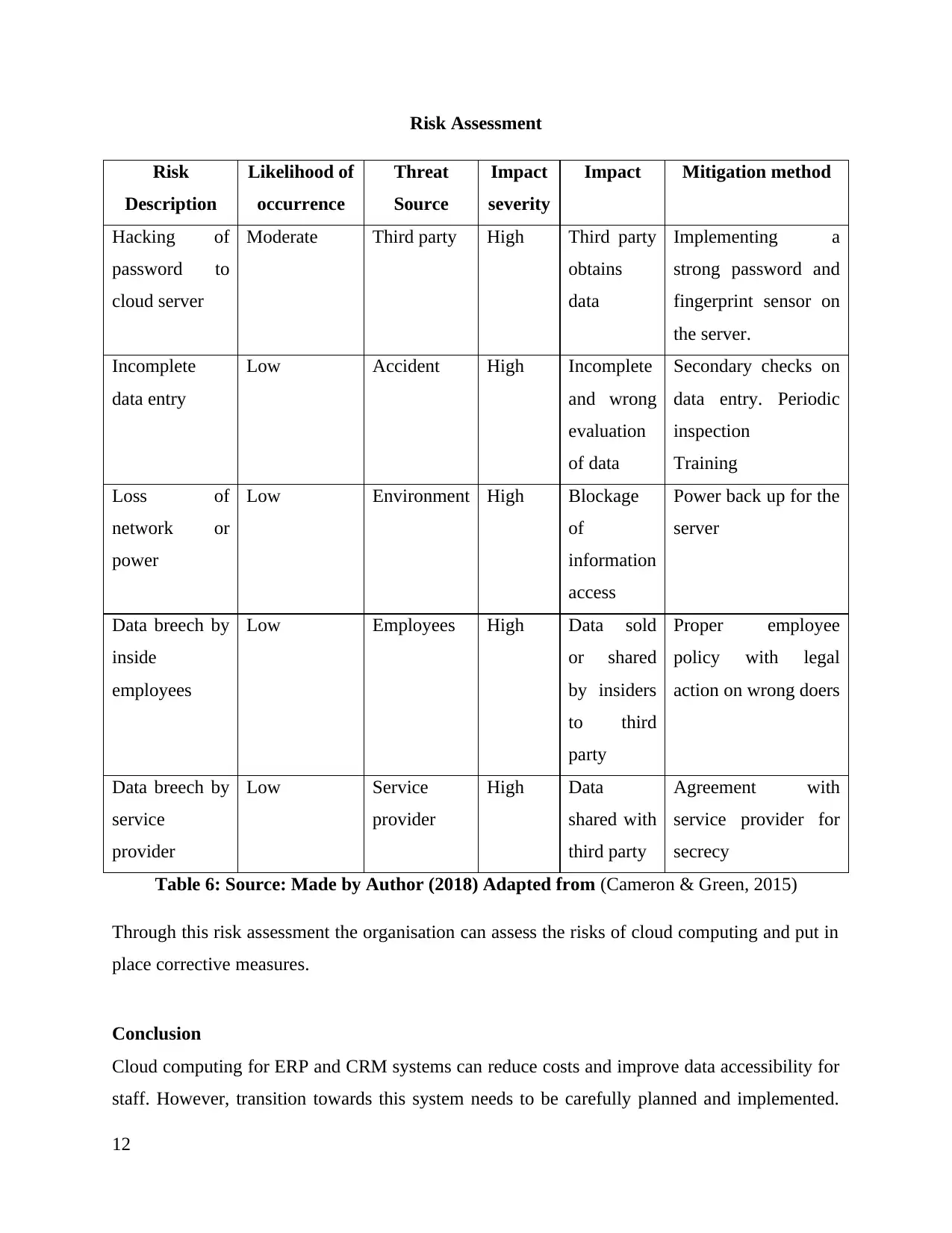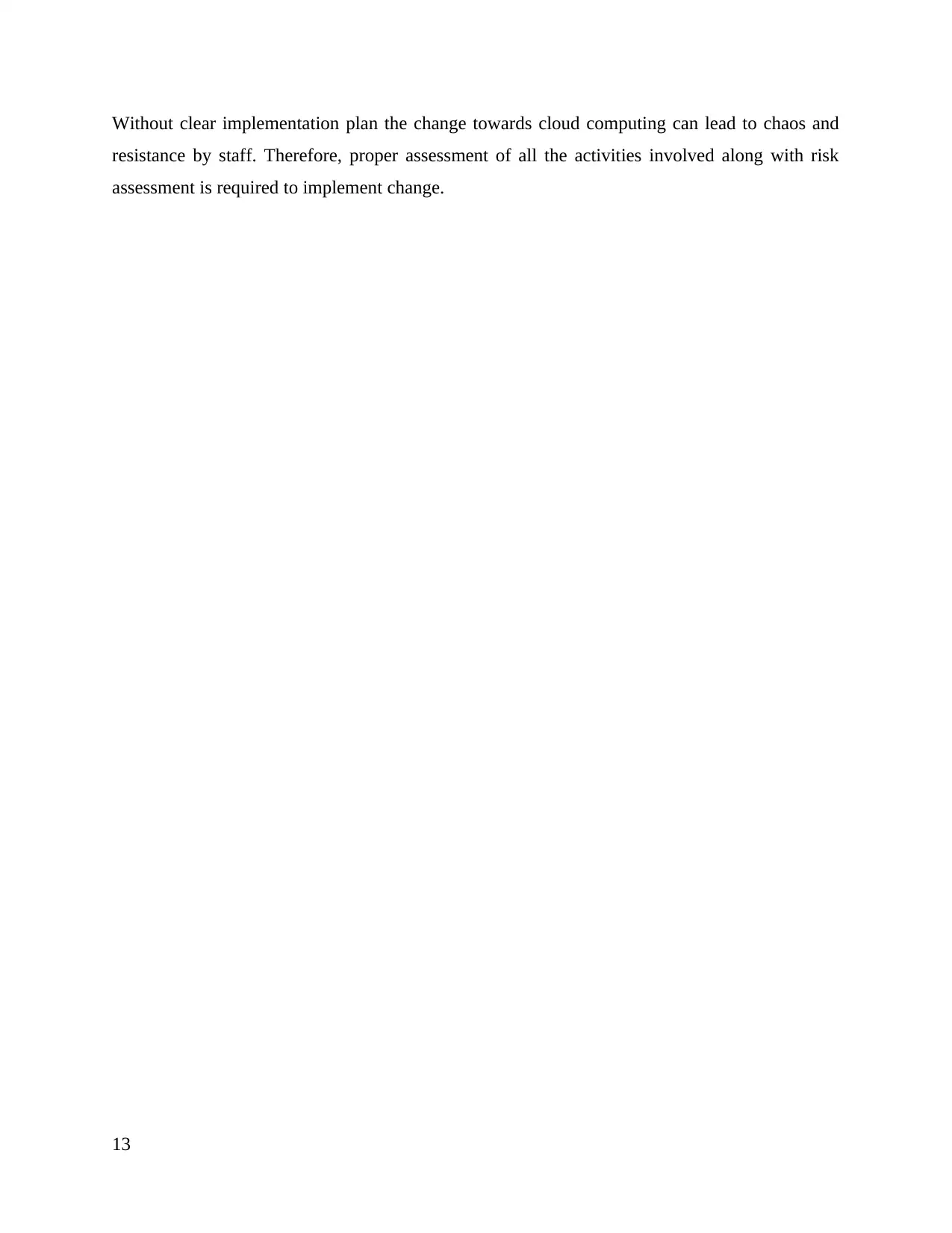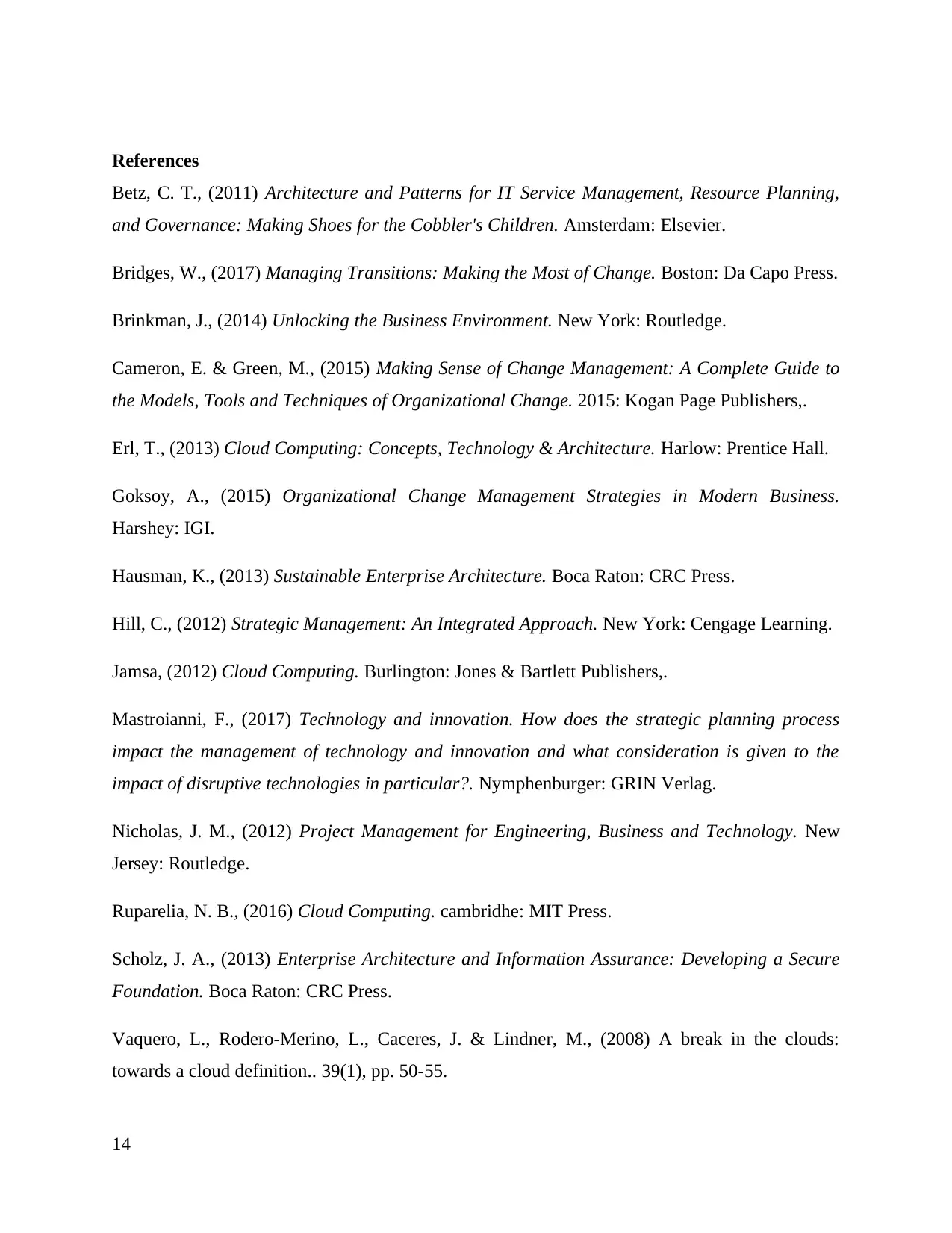Enterprise Planning and Implementation Executive Summary: An Enumerative Study
VerifiedAI Summary
Enterprise Planning and Implementation Executive Summary The following study tries to understand the implementation process of a new change in an organisation. Contents Executive Summary 2 Introduction 4 Implementation of change for Woolworths 4 Description and Justification of Information Architecture 4 Technology architecture 4 Work breakdown structure and work package decomposition 5 Activities and Processes 6 Critical success factors 7 Governance- Stakeholders Management 7 Governance- Costing and budget management 9 Pre implementation plan 10 Post implementation Plan 10 Risk Assessment 11 Conclusion 12 References 14 Introduction Woolworths is one of the largest
![[object Object]](/_next/static/media/star-bottom.7253800d.svg)
![[object Object]](/_next/static/media/star-bottom.7253800d.svg)
